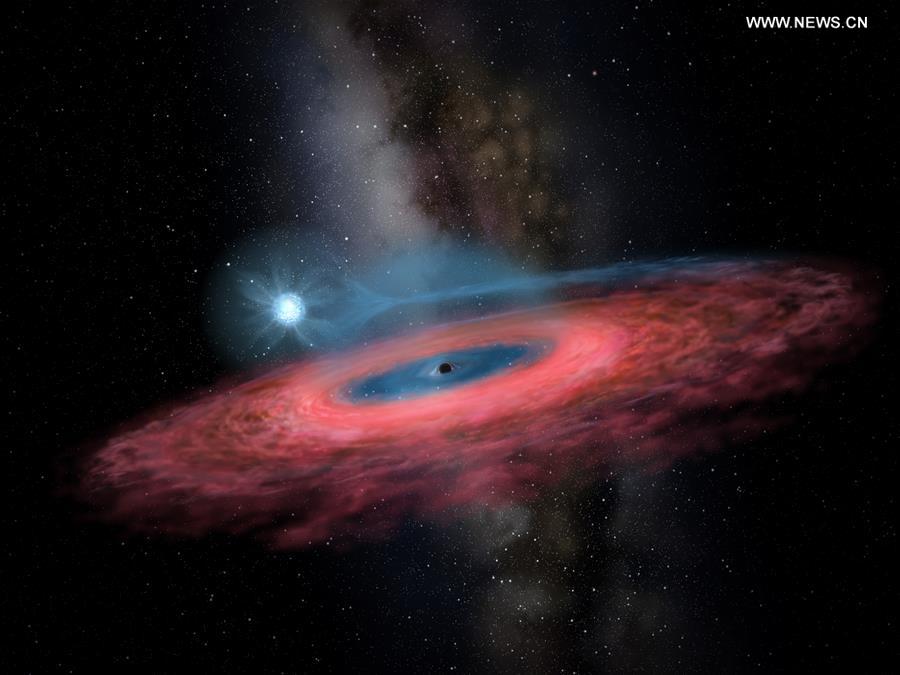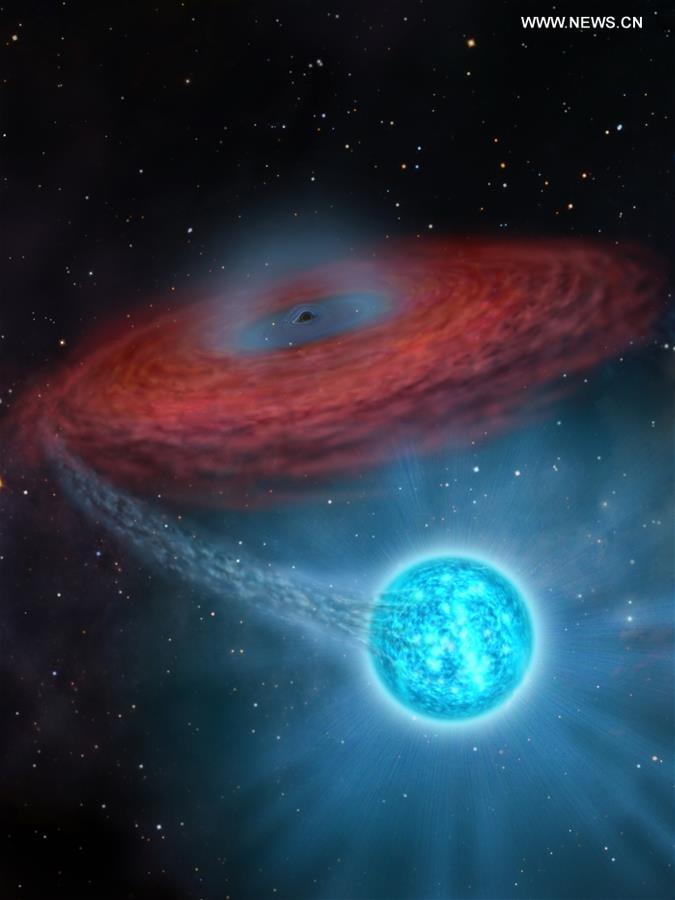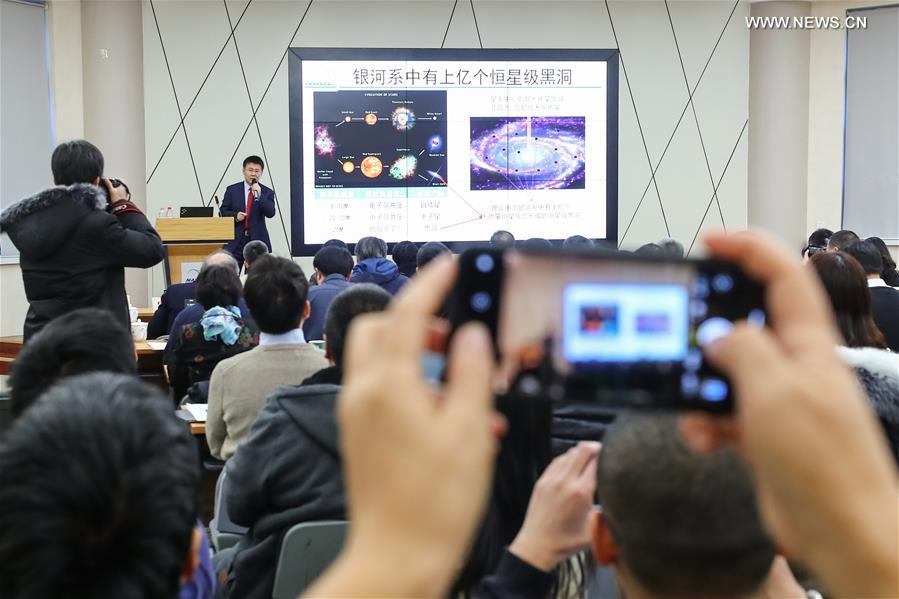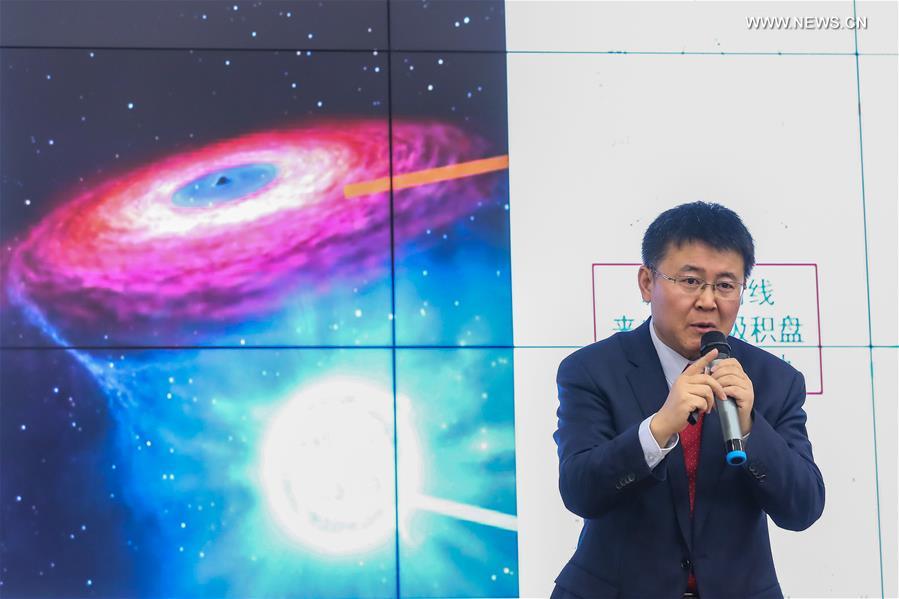Chinese astronomers discover unexpected huge stellar black hole
Xinhua
1575446993000

This photo shows the artistic rendering of the black hole LB-1. A Chinese-led research team has discovered a surprisingly huge stellar black hole about 14,000 light-years from Earth -- our "backyard" of the universe -- forcing scientists to re-examine how such black holes form. The team, headed by Liu Jifeng, of the National Astronomical Observatory of the Chinese Academy of Sciences (NAOC), spotted the black hole, which has a mass 70 times greater than the Sun. Researchers named the monster black hole LB-1. (Xinhua)

This photo shows the artistic rendering of the black hole LB-1. A Chinese-led research team has discovered a surprisingly huge stellar black hole about 14,000 light-years from Earth -- our "backyard" of the universe -- forcing scientists to re-examine how such black holes form. The team, headed by Liu Jifeng, of the National Astronomical Observatory of the Chinese Academy of Sciences (NAOC), spotted the black hole, which has a mass 70 times greater than the Sun. Researchers named the monster black hole LB-1. (Xinhua)

Liu Jifeng (1st R Back), deputy director-general of the National Astronomical Observatory of the Chinese Academy of Sciences (NAOC) and the first author of the study, speaks during a press conference of the black hole LB-1 discovered with the Large Sky Area Multi-Object Fibre Spectroscopy Telescope (LAMOST), in Beijing, capital of China, Nov. 27, 2019. A Chinese-led research team has discovered a surprisingly huge stellar black hole about 14,000 light years from Earth -- our "backyard" of the universe -- forcing scientists to re-examine how such black holes form. The team, headed by Liu Jifeng, spotted the black hole, which has a mass 70 times greater than the Sun. Researchers named the monster black hole LB-1. (Xinhua)

Liu Jifeng, deputy director-general of the National Astronomical Observatory of the Chinese Academy of Sciences (NAOC) and the first author of the study, speaks during a press conference of the black hole LB-1 discovered with the Large Sky Area Multi-Object Fibre Spectroscopy Telescope (LAMOST), in Beijing, capital of China, Nov. 27, 2019. A Chinese-led research team has discovered a surprisingly huge stellar black hole about 14,000 light years from Earth -- our "backyard" of the universe -- forcing scientists to re-examine how such black holes form. The team, headed by Liu Jifeng, spotted the black hole, which has a mass 70 times greater than the Sun. Researchers named the monster black hole LB-1. (Xinhua)

Liu Jifeng, deputy director-general of the National Astronomical Observatory of the Chinese Academy of Sciences (NAOC) and the first author of the study, speaks during a press conference of the black hole LB-1 discovered with the Large Sky Area Multi-Object Fibre Spectroscopy Telescope (LAMOST), in Beijing, capital of China, Nov. 27, 2019. A Chinese-led research team has discovered a surprisingly huge stellar black hole about 14,000 light years from Earth -- our "backyard" of the universe -- forcing scientists to re-examine how such black holes form. The team, headed by Liu Jifeng, spotted the black hole, which has a mass 70 times greater than the Sun. Researchers named the monster black hole LB-1. (Xinhua)


